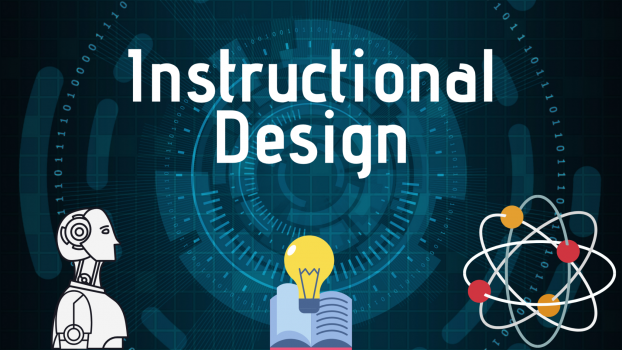Introduction to Instructional Design
Instructional design is a cornerstone of adequate education and training programs. It involves systematically developing educational experiences tailored to meet the learning needs of various audiences. A well-structured instructional design certificate can provide the necessary skills and knowledge to excel in this field. Adopting innovative instructional design strategies is more critical than ever in today’s rapidly evolving educational landscape. It includes employing various methods to ensure that instructional materials are engaging and effective in promoting learning.
Why Technology Integration Matters
Incorporating technology into instructional design isn’t just a trend; it’s a necessity. Tools such as virtual reality and augmented reality offer immersive learning experiences that can engage students more deeply than traditional methods. These technologies empower educators and instructional designers to create interactive and experiential learning, leading to better retention and understanding of the material. For example, virtual reality can simulate real-world scenarios that allow learners to practice skills in a safe, controlled environment. Similarly, augmented reality can overlay information onto the physical world, providing contextual learning experiences that enhance comprehension.
Data-Driven Decision Making
The use of data analytics is transforming how educators approach instructional design. By analyzing learner data, instructors can identify which teaching methods are most effective and which areas need improvement. Data-driven insights enable a more personalized learning experience, catering to individual needs and abilities. For instance, tracking student performance data can help educators pinpoint topics that students struggle with the most and adjust their teaching strategies accordingly. This dynamic approach ensures that instructional design remains flexible and responsive to the needs of learners.
Benefits of Data Analytics
- Identifies the most effective teaching strategies, allowing educators to focus on what works best.
- Highlights areas requiring improvement, providing opportunities for targeted intervention.
- Enables personalized learning experiences, making education more relevant and engaging for each student.
Continuous Evaluation and Adaptation
A vital component of effective instructional design is the ongoing evaluation of training programs. Regular feedback from learners helps instructors refine and improve the educational experience. Adapting materials and strategies based on learner feedback ensures the program remains relevant and practical. This iterative process, driven by educators and instructional designers, is crucial for maintaining the quality and efficacy of educational programs over time. For example, periodic surveys and assessments can reveal insights into how learners interact with the material and what changes could enhance their experience.
Methods of Evaluation
- Surveys and questionnaires provide quantitative data on learner satisfaction and understanding.
- Focus groups and discussions offer qualitative insights into the learner experience, highlighting specific areas for improvement.
- Performance assessments measure the effectiveness of instructional materials in achieving desired learning outcomes.
Collaborative Learning Environments
Creating opportunities for collaborative learning is essential. When students work together, they can share diverse perspectives and develop a deeper understanding of the subject matter. Incorporating group projects and peer reviews into instructional design fosters a supportive learning community. Collaborative learning environments encourage critical thinking, problem-solving, and communication skills, which are valuable in academic and professional settings. Additionally, collaborative projects help learners develop teamwork skills and build peer relationships, enhancing their overall educational experience.
Strategies for Collaboration
- Group projects that require students to work together on complex tasks, simulating real-world work environments.
- Peer-review sessions where students critique each other’s work, encouraging constructive feedback and critical analysis.
- Collaborative online forums that allow learners to discuss topics, share resources, and support each other’s learning.
The Role of Instructors
Instructors play a critical role in the success of any instructional design strategy. Their enthusiasm, expertise, and ability to connect with students can significantly impact learning outcomes. Professional development for instructors should be an ongoing priority, ensuring they are equipped with the latest tools and techniques to engage learners effectively. Instructors should also be adept at using technology and data analytics to enhance their teaching methods. Continuous professional growth in these areas can help instructors stay current with educational trends and best practices, ultimately benefiting their students.
Professional Development Tips
- Attend workshops and seminars to learn about new instructional strategies and technologies.
- Participate in online courses that provide flexibility and access to various topics.
- Engage in peer learning and mentoring, where instructors can share experiences and learn from each other’s successes and challenges.
Future Trends in Instructional Design
The field of instructional design is continually evolving—emerging trends such as adaptive learning technologies and artificial intelligence promise to enhance personalized learning experiences further. Staying informed about these trends helps educators integrate new strategies and tools into their instructional design framework and opens up exciting possibilities for the future of education. For instance, adaptive learning systems can tailor educational content to students’ needs, providing a more customized learning experience. Meanwhile, artificial intelligence can offer real-time feedback and support, helping learners to stay on track and achieve their goals.
Upcoming Trends
- Adaptive learning technologies that adjust the pace and difficulty of educational content based on individual learner performance.
- Artificial intelligence in education provides personalized feedback and automates administrative tasks, allowing instructors to focus more on teaching.
- Gamification and interactive tools that make learning more engaging and fun motivate students to participate actively in their education.
Conclusion
Innovative instructional design strategies are essential for creating compelling and engaging learning experiences. Educators can significantly enhance learning outcomes by integrating technology, leveraging data, fostering collaboration, and continuously evaluating and adapting programs. Embracing these strategies ensures that instructional design evolves with learners’ needs, preparing them for success in an ever-changing world. As educational challenges continue to evolve, the commitment to implementing innovative and adaptive instructional strategies will play a crucial role in shaping the future of learning.



